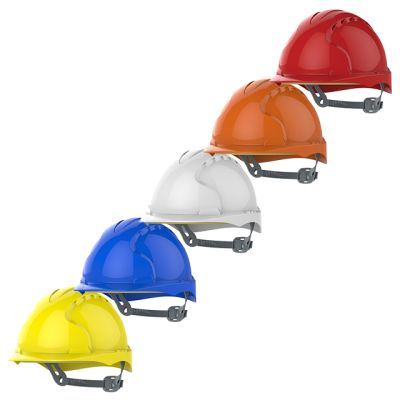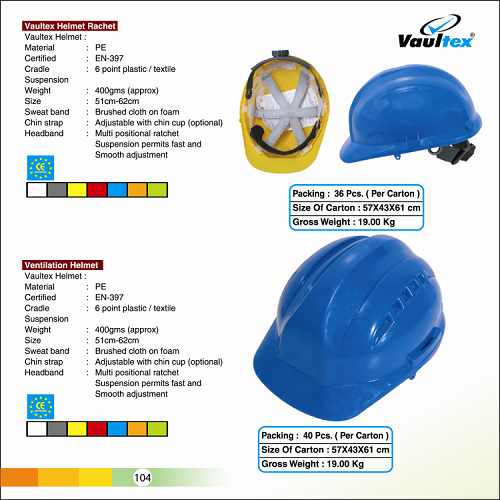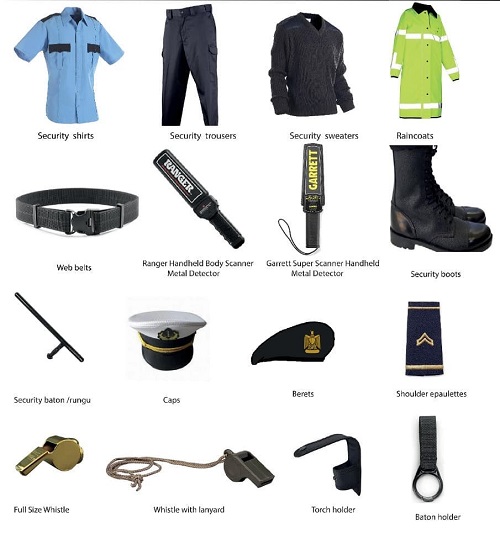Category
- Uncategorized
- Fire Safety
- PPES
- Safety Boots & Gumboots Supplier In Nairobi Kenya
- Security Uniforms
- Tools & Signages
- Uniforms
Product categories
- Fire Safety
- PPES
- Beekeeping equipment
- Body protection
- Eye protection
- Fall protection
- Hand protection
- Head protection
- Healthcare Uniforms
- Hearing protection
- Hotel and Hospitality Uniforms
- Respiratory protection
- Rider gears and Raincoats
- Safety Boots & Gumboots Supplier In Nairobi Kenya
- Security Uniforms
- Tools & Signages
- Uncategorized
- Uniforms

Safety Helmet Classification Types: European Standard Comprehensive Guide
In high-risk industries such as construction, electrical work, and mountaineering, ensuring worker safety is paramount. Safety helmets, a critical component of personal protective equipment (PPE), are designed to protect against various hazards. In Europe, these helmets are regulated by specific standards to ensure consistent protection levels. This guide examines the classifications and standards of European safety helmets, enabling businesses to select the most suitable head protection for their workforce.
The UK Influence on Kenyan Safety Standards
In Kenya, many aspects of occupational health and safety are heavily influenced by UK regulations. This is especially evident in the legal frameworks that guide workplace safety. The Kenya Occupational Health and Safety Act 2007 (OSHA) shares many similarities with the UK’s Health and Safety at Work etc. Act 1974, particularly in how employers are mandated to ensure a safe working environment for their employees.
Due to this alignment, most safety-conscious businesses in Kenya prefer or require safety products (specifically safety helmets) certified to European standards, such as EN 397, EN 14052, or EN 50365. This has led to a growing demand in the Kenyan market for safety helmets that meet European (EN) standards, especially in sectors such as construction, electrical work, engineering, and logistics.
Understanding European Safety Helmet Standards
European safety helmets are primarily governed by the following standards:
- EN 397: Specifies requirements for industrial safety helmets, focusing on protection against falling objects and mechanical impacts.
- EN 14052: Covers high-performance industrial helmets, providing enhanced protection against more severe impacts, including lateral forces.
- EN 12492: Pertains to helmets used in mountaineering and climbing, emphasizing protection against multiple impact directions and retention system strength.
- EN 50365: Applies to electrically insulating helmets for use on low voltage installations, ensuring protection against electrical shocks.
Each standard outlines specific testing methods and performance criteria to ensure helmets provide adequate protection in their intended environments.
Classifications of Safety Helmets
1. Industrial Safety Helmets (EN 397)

Designed for general industrial use, these helmets protect against falling objects and mechanical impacts. Key features include:
- Shock Absorption: Tested with a 50J impact to ensure energy from falling objects is absorbed.
- Penetration Resistance: Assessed using a 3kg conical striker dropped from 1m.
- Optional Features: Protection against extreme temperatures (-20°C to +150°C), electrical insulation up to 440V, and resistance to molten metal splashes.
These helmets are commonly used in construction, manufacturing, and other industrial settings.
2. High-Performance Industrial Helmets (EN 14052)
For environments with higher risks, such as mining or demolition, EN 14052 helmets offer enhanced protection:
- Increased Impact Resistance: Crown impacts tested with 100J energy; lateral impacts with 50J.
- Comprehensive Coverage: Protection against impacts from various angles, including sides and rear.
- Enhanced Retention Systems: Stronger chin straps to ensure helmet stability during impacts.
These helmets are suitable for high-risk industrial applications that require enhanced protection.
3. Mountaineering and Climbing Helmets (EN 12492)
Tailored for activities involving heights, these helmets prioritize multi-directional impact protection and secure fit:
- Impact Protection: Tested for vertical, frontal, lateral, and rear impacts.
- Penetration Resistance: Ensures sharp objects cannot penetrate the helmet.
- Retention System Strength: Chin straps must withstand forces exceeding 50 kg without significant elongation.
- Ventilation: Designed with ventilation areas greater than 4 cm² for comfort during strenuous activities.
Ideal for workers in construction, utilities, or rescue operations involving elevated positions.
4. Electrically Insulating Helmets (EN 50365)
Specifically designed for electrical work, these helmets provide insulation against electric shocks:
- Voltage Protection: Suitable for use in environments with up to 1000V AC or 1500V DC.
- Non-Conductive Materials: Constructed without any conductive parts to prevent electrical conduction.
- Ventilation Restrictions: If present, vents must not allow accidental contact with live parts.
Essential for electricians, utility workers, and others exposed to electrical hazards.
Special Features and Accessories
Enhancing the functionality and comfort of safety helmets can be achieved through various accessories:
- Visors and Face Shields: Provide additional protection against sparks, debris, or chemical splashes.
- Ear Protection: Attachable ear defenders help protect against high noise levels in environments like construction sites.
- Chin Straps: Ensure the helmet remains securely in place, especially crucial for work at heights.
- Ventilation Systems: Integrated vents improve airflow, enhancing comfort during prolonged use.
Selecting appropriate accessories based on the work environment can significantly improve safety and comfort.
Selecting the Right Safety Helmet
Choosing the appropriate helmet involves assessing the specific hazards of the work environment:
- Construction Sites: EN 397 helmets with optional visors and ear protection for general construction activities.
- High-Risk Industrial Areas: EN 14052 helmets for environments with potential for severe impacts from various directions.
- Work at Heights: EN 12492 helmets with strong retention systems to prevent dislodgement during falls.
- Electrical Work: EN 50365 helmets to protect against electrical shocks in low-voltage installations.
Assessing the specific risks and selecting helmets that meet the relevant standards ensures optimal protection.
Maintenance and Care
To maintain the protective integrity of safety helmets:
- Regular Inspections: Check for cracks, dents, or other signs of wear and damage.
- Cleaning: Use mild soap and water; avoid harsh chemicals that can degrade materials.
- Storage: Store in a cool, dry place away from direct sunlight and chemicals.
- Replacement: Follow manufacturer guidelines, typically replacing helmets every 3-5 years or after a significant impact.
Proper maintenance ensures helmets provide the intended level of protection throughout their service life.
Conclusion
Understanding the classifications and standards of European safety helmets is crucial for ensuring worker safety across various industries. By selecting helmets that meet the appropriate standards and maintaining them properly, businesses can provide effective head protection, reducing the risk of injuries in hazardous work environments.
For workplaces in Kenya, aligning with European-certified safety helmets is more than a preference—it’s a step toward global compliance and improved workforce safety.
Your team’s safety starts at the top—literally. Discover our complete collection of European-standard safety helmets and other head protection gear, tailored for Kenyan workplaces. Explore now and make the smart, safe choice today.
Written by Bekamorbit
Best offers
Join Risk Free
30 days refund
100% Safe
Secure Shopping
24x7 Support
Online 24 hours
Best Offers
Grab Now
Fast Delivery
Get Your Products Delivery Intime
Store Blog
Featured Products
-
 wall-mounted with 1000 ml bottles emergency eye wash station
KSh9,000.00
wall-mounted with 1000 ml bottles emergency eye wash station
KSh9,000.00 -
 8-Gallon Gravity-flow Portable Eye Wash Station
KSh14,000.00
8-Gallon Gravity-flow Portable Eye Wash Station
KSh14,000.00 -
 Lab Safety Goggles
KSh400.00
Lab Safety Goggles
KSh400.00 -
 Over Glasses Clear Safety goggles
KSh450.00
Over Glasses Clear Safety goggles
KSh450.00 -
 Foldable Noise Cancelling Earmuff
KSh1,300.00
Foldable Noise Cancelling Earmuff
KSh1,300.00 -
 Askari Security Boots
KSh1,800.00
Askari Security Boots
KSh1,800.00 -
 White light duty gumboots
KSh800.00
White light duty gumboots
KSh800.00 -
 Ace Duma Safety Shoes
KSh3,100.00
Ace Duma Safety Shoes
KSh3,100.00

















Leave a Reply